Best practices for managing user-generated content
Last edited:
If you see branded content that doesn’t come from a brand itself, it’s probably user-generated content, or UGC. In fact, UGC is any type of content — from plain text to images and videos — created by an audience of a brand and published to an online or social network.
There are many articles on how to encourage users to create such content for your brand: get a branded hashtag, run a contest, offer a free trial in return for a testimonial, and so on. In this article, we’re not going to focus on that. We’ll speak about what we’re experts at: user-generated content management. We’ll tell you how to upload, moderate, host, and deliver such content so that it doesn’t harm your customer experience or web performance. Let’s get started!
But first, why is user-generated content important?
UGC can appear in many forms: comments on your blog, testimonials on your website, social media posts, Instagram stories, blog posts written by users, video reviews, and more. Such content works as social proof and helps businesses build trustful relationships with their audience
 like in this example of review on packaged ice cream in the social media
like in this example of review on packaged ice cream in the social mediaWhatever form UGC takes, it usually works much better than traditional advertising. Here’s why:
- It’s authentic. 90% of consumers say authenticity is important when deciding which brands they like and support, and, according to them, user-generated content is more authentic than brand-created content.
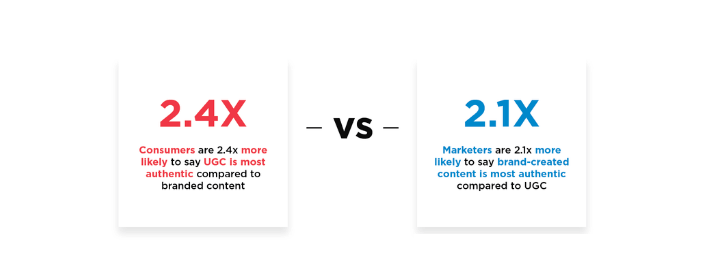 1,590 consumers and 150 B2C marketers were surveyed.
1,590 consumers and 150 B2C marketers were surveyed.- It’s trustworthy. People tend to trust UGC more because it’s not you talking about your product, it's a real person outside your company. If the user sees that your product has solved similar problems for another company, they’ll trust you much more than after viewing your landing page.
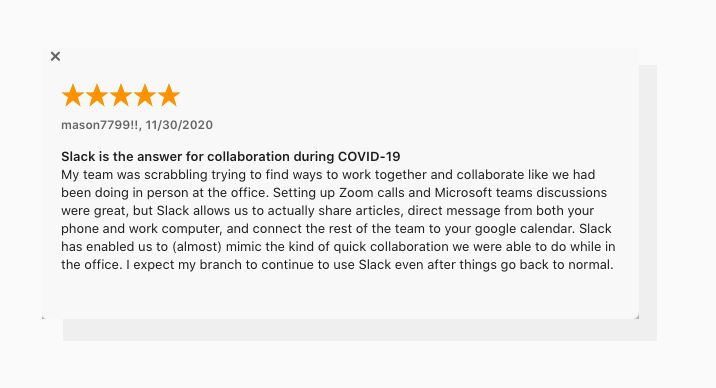 Hey, I’m experiencing the same problem!
Hey, I’m experiencing the same problem!- It helps you make sales. The same research shows that 79% of people say UGC highly influences their purchasing decisions.
On top of that, such content doesn’t require lots of time or money investments from the brand. Usually, it’s created organically; you just need to gently push your audience in the right direction by creating a user-friendly flow on your website.
Whether your site consists of content that’s created by users, or you just plan to add a comment section to your blog, keep reading to discover the best practices of managing UGC right.
Wait, is UGC management a big deal?
When you post content to your own website, you have complete control over it. You can post it just the way you need it — in a suitable resolution, compliant with your brand book, optimized for search engines, and so on. When you open up your website to user-generated content, you lose this control. And if you don’t adjust everything right, your website can turn into a mess. Here are the most common challenges you can encounter after allowing user-generated content:
- Some users can post irrelevant or offensive content.
- Bots can spam your website.
- Users can upload files that are too large or in the wrong formats, which can harm your website’s load speed.
- Users can post images of different sizes and styles, leading to a lack of consistency throughout the website.
- The content published by users won’t be properly optimized for search engines, harming overall website performance.
Now let’s take a closer look at each of these challenges and describe some of the most common user-generated content management mechanics:
- Write a continent policy
- Provide an easy way to upload and edit visuals
- Make sure uploaded content is optimized
- Take care of content moderation
- Don’t forget about SEO
- Organize your storage
- Provide privacy
- Ensure a proper security level
1. Write a content policy
So, you’ve decided to open up your website to user-generated content — for example, adding product testimonials or submitting blog posts. The first thing you need to do is create a UGC content policy. Just collect all your rules, guidelines, and content and legal standards on one page. This page can include:
- Types of content that aren’t allowed. Examples: Spam, malware, irrelevant links, offensive content, private information.
- Your guidelines for photos and videos. Examples: The image resolution should be 640 x 480 pixels minimum; do not publish pictures or videos in which people are identifiable without their permission.
- Rules for communicating with other users. Examples: No hateful or offensive comments; do not reveal someone’s personal information.
A UGC policy will help users understand what you expect from the content they post. Plus, it will act as your guide for all questionable matters during content moderation. To create this page, you might need to consult with lawyers.
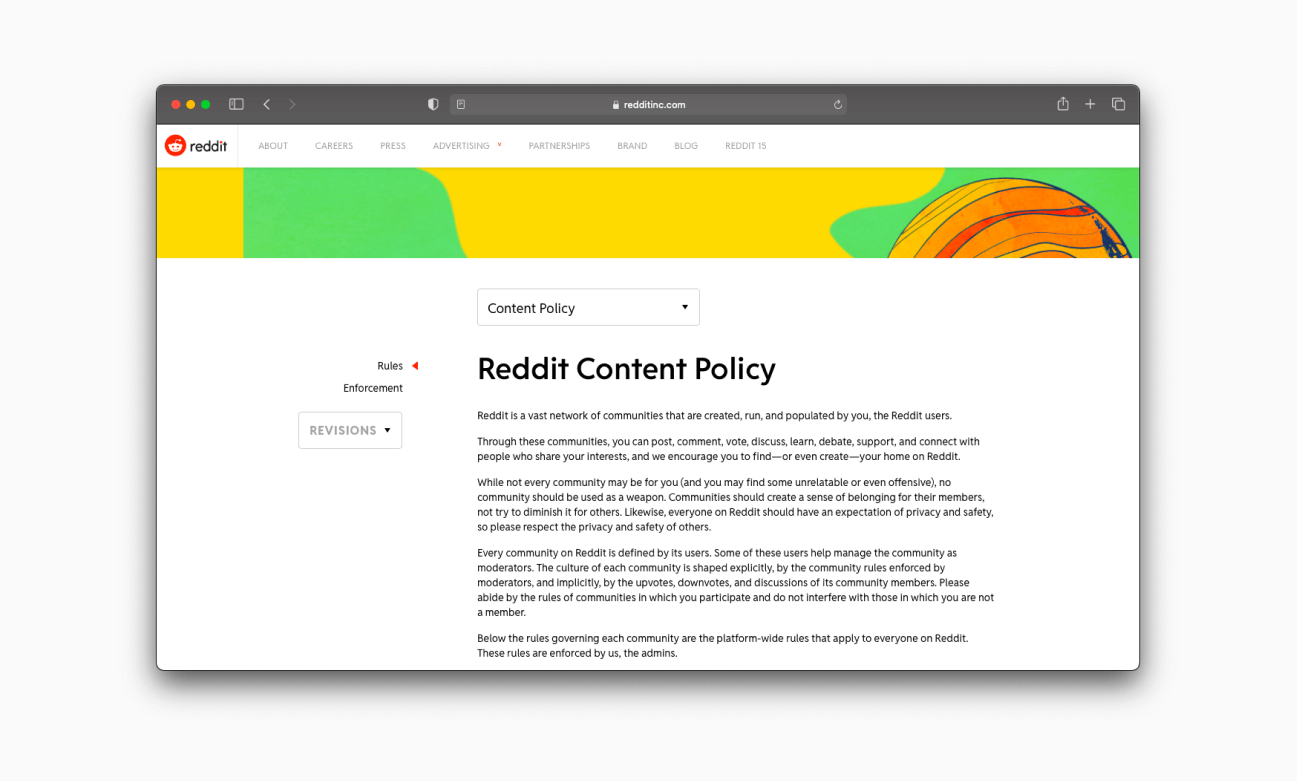 Tell your users what’s allowed and what’s not.
Tell your users what’s allowed and what’s not.2. Provide an easy way to upload and edit visuals
If you want to allow your users to post images and videos to your site, you need to provide them with an easy way to upload and edit them. For example, if your users need to upload a profile photo, it would be nice if the uploader on your website allowed users to crop images to a square in a few clicks. Remember: It’s in your best interest to have your users creating content for you, so make sure that the uploading and editing process is easy and smooth.
The fastest and easiest way to solve this issue is to integrate a ready-made file uploader. Uploadcare File Uploader is a good choice because it provides a built-in image editor with lots of possible image transformations. Besides cropping, users can resize, rotate, adjust quality, blur some areas, or even add a watermark to a photo.
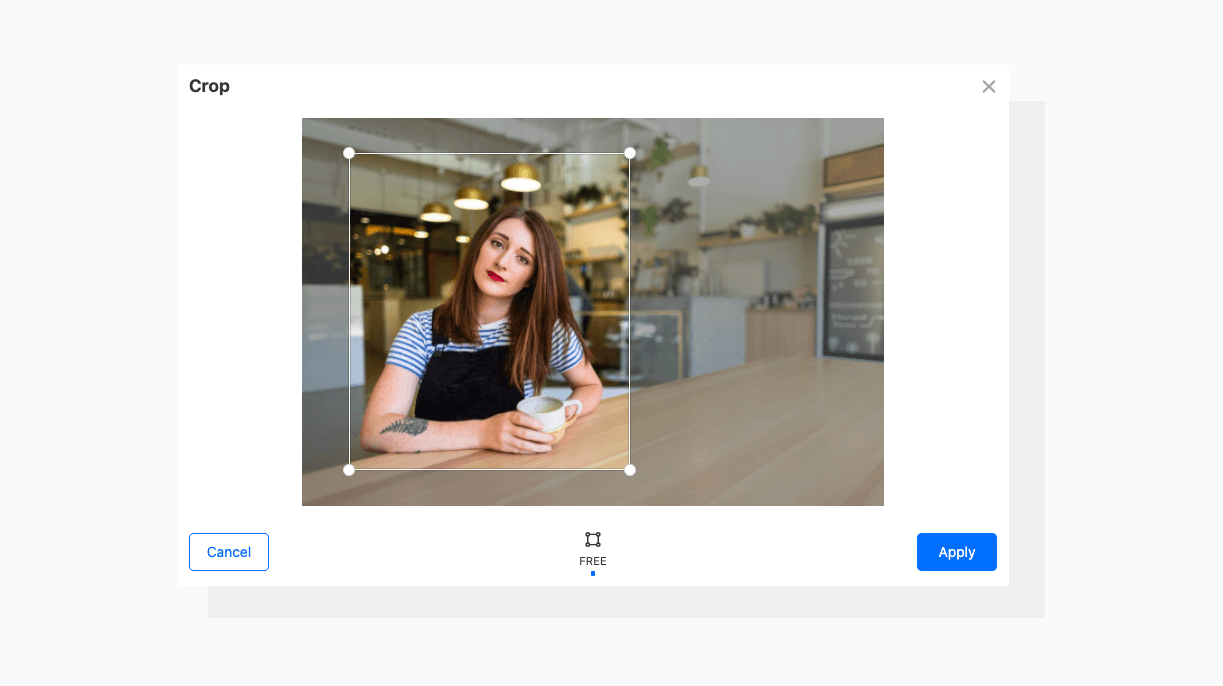 Cropping an avatar photo in Uploadcare.
Cropping an avatar photo in Uploadcare.An easy-to-use file uploader will help you get more user-generated content: if users don’t meet any obstacles while uploading and editing their visuals, they’ll be more likely to make it to publication.
Another feature you can use for these purposes is Smart Crop. Let’s say you allow users to write product testimonials and back them up with product photos. The problem is, some photos taken by users can include an irrelevant background that distracts from what’s important.
With Smart Crop, you can teach your system to analyze images, detect the most important object in each photo and crop the rest automatically.
3. Make sure uploaded content is optimized
Another problem is that users don’t usually bother about the size and format of the files they upload. That’s why sometimes they can, for example, add too large images or use outdated image formats. And if your site contains a lot of unoptimized images, its load speed and overall performance will suffer.
Even if you’ve created a well-written content policy and clearly specified maximum file size and required formats, it doesn’t give you any guarantees. Some users probably won’t pay attention to it, some don’t have graphic editors or don’t know how to use them to crop images. Actually, they don’t have to know all those things. It’s the task of the site owner to make sure everything works as needed.
Uploadcare can help you with that too. It allows you to:
- Shrink all images uploaded by users automatically. All you need to do is tick the checkbox in the settings.
- Automatically convert all the uploaded photos to WebP format — the best format for publishing photos on the web.
- Automatically convert GIF files to video format, which is also better for SEO.
- Specify maximum and minimum file size as well as allowed formats.
4. Take care of content moderation
Sooner or later, you’ll have to deal with irrelevant content and spam posted by bots. Thus, any website owner who accepts UGC needs to take care of content moderation. Here’s what you can do:
-
You can recruit content moderators. Of course, it depends on the amount of UGC you receive. If you run a small blog with a comment section in it, you can monitor it yourself. Just set aside some time to review your user-generated content regularly. If we’re talking about a large marketplace that receives a lot of UGC every day, you might need to think about recruiting moderators who will help you with that.
-
Use a CAPTCHA on content submission to fight back against bots. One of the most popular systems you can try is Google’s reCAPTCHA.
-
Allow your users to help you with moderation by adding a "Report a violation" link to user-generated content.
Alternatively, you can use Uploadcare’s Object and Face Recognition tool to automate your moderation process. This tool helps you define a general class of objects in a photo: it can detect a car, a person, a vegetable, or any other object you need.
 For example a carrot is easily identified as a plant with Uploadcare Object Recognition tool.
For example a carrot is easily identified as a plant with Uploadcare Object Recognition tool.This means that if you, for example, run a site about cars, you can train your system to detect everything that’s not a car and prevent people adding such photos to your site. Also, you can set the system to detect adult or violent content and automatically forbid uploading it. But note that this tool wasn’t created specially for the purpose of moderation. It can save you from some types of forbidden content but not all of them.
5. Don’t forget about SEO
If you allow users to post content on your site, you need to make sure that your website automatically puts the right HTML tags and uses the correct markup.
Why is this important? See, the main goal of search engine robots is to make sure that the information on a website corresponds to a user’s search query. To find out if your content is relevant and adds value to the user, search bots need to understand what your page is about. Keywords and tags are what helps bots understand your content better and show it to users who really need it.
A high-performing website is also valuable to streamline your backlink efforts with partner brands since the more valuable your content is, the more eager they would be to provide backlinks.
That’s why you need to use the right HTML tags throughout the entire website: metadata, headings, subheadings, etc. Find the full list of recommendations for HTML here: HTML Living Standard.
Another thing you can do to help search engine bots better understand the context of your page is to provide structured data. Structured data is a standardized format for classifying the page content. For example, if there are reviews on your page, you can use a review schema to structure the content. Here’s what it’ll look like:
<div itemprop="review" itemscope itemtype="https://schema.org/Review">
<span itemprop="name">Value purchase</span> -
by <span itemprop="author">Lucas</span>,
<meta itemprop="datePublished" content="2011-03-25">March 25, 2011
<div itemprop="reviewRating" itemscope itemtype="https://schema.org/Rating">
<meta itemprop="worstRating" content = "1"/>
<span itemprop="ratingValue">4</span>/
<span itemprop="bestRating">5</span>stars
</div>
<span itemprop="reviewBody">Great microwave for the price. It is small and
fits in my apartment.</span>
</div>By adding this markup, you not only give search bots more context, but also allow them to showcase this information via Rich Snippets:
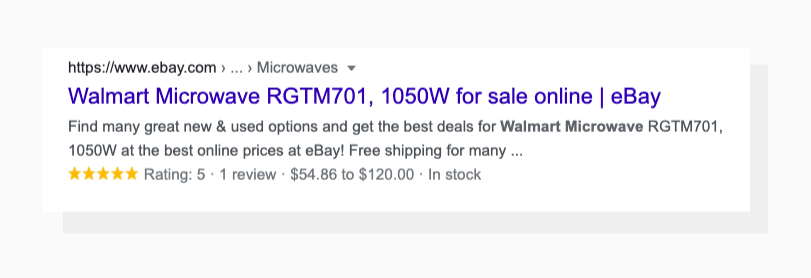 If you provide structured data, rating and other info can appear in the SERPs.
If you provide structured data, rating and other info can appear in the SERPs.All the schemas for structured data are gathered on Schema.org. For user-generated content, you can use review and comment markups depending on your needs.
6. Organize your storage
One more factor you need to take care of is where you’re going to host all the content that users upload to your site. Saving user’s files on the same server where all your important website files are stored isn’t a good idea. If some malicious software slips through, it can bring your entire website down.
The most optimal way to host UGC is to use separate cloud storage, and Uploadcare can provide you with it. Plus, the Object Recognition feature can detect what’s in the picture and assign labels to each photo. This can help you organize your assets, sort them out into folders and quickly find the content you need.
7. Provide privacy
Say a user wants to share a photo of a meal in your restaurant. But here’s the thing: in the background of the photo, there are some people who accidentally happened to be in the frame. Does this mean the user can’t publish the photo, and you lose a great piece of UGC?
In fact, that’s right: you can’t publish a photo if there are people in it who didn’t give their permission. What you can do is simply blur their faces. With Uploadcare, it won’t take you longer than a few minutes. You can allow users to blur areas in the photo manually, or you can adjust your system to do it automatically in certain cases
 or instance, when you need to blur laughing people faces for some reason
or instance, when you need to blur laughing people faces for some reason8. Ensure a proper security level
When you open up your website to UGC, there’s always a risk of malware, unauthorized server access, attacks on users’ data, hosting of illegal files, and so on. Here are the best practices for file upload security that will help prevent vulnerabilities:
- Restrict uploading certain file types. For example, set up your uploader so that it doesn’t accept executable files (.exe, .bat, .app, etc.). These file types are capable of executing commands and running malicious code.
- Set a maximum file size and limit the number of uploads. This will help you prevent a potential service outage if someone decides to bring your site down by flooding it with large files.
- Store files outside the webroot. This will prevent you from having security problems as well as data losses during migrations.
- Set up SSL encryption. This will secure data passed between the web server and browser.
- Ensure compliance. The upload form should be compliant with the GDPR, EU-US Privacy Shield, and other regulatory standards recommended for your niche and country.
Uploadcare provides all these features out of the box, as well as some advanced security features like data encryption, access control, and backups.
Wrapping up
Sounds like a lot of work, right? Well, it is a lot of work if you do it manually or build a solution from scratch: from an uploading solution to a moderation system. But if you decide to integrate a media handling tool, you’ll be able to get most of those preparations done by the end of the day.
Uploadcare has everything you need to upload, moderate, deliver and store UGC. If you want to make sure it’s the solution you’re looking for, you can give it a spin using the free plan, or you can schedule a demo and our tech specialist will show you around.